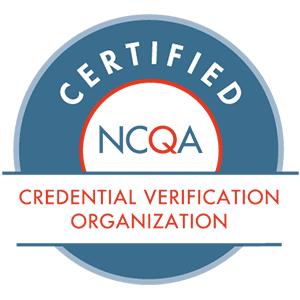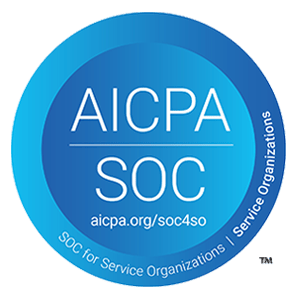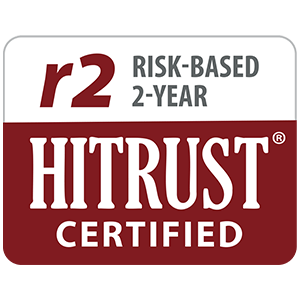The pandemic and its accompanying disasters have created urgency for many aspects of healthcare delivery, access, and oversight. Provider network innovation has become a critical way payers address the many changes and trends of 2020.
As healthcare continues to adapt, many payers lead the way in digital health and telehealth, addressing SDOH and health equity, and evolving relationships with primary care providers. These changes all affect how provider networks are constructed and managed to ensure continuity of care, utilization recovery, and regulatory compliance.
In this post, we’ll cover some of the top trends leading payers to re-examine provider network strategies and how payers are reacting and furthering provider network innovation.
What are the trends forcing provider networks to adapt?
The Shift to Telehealth and Home Health Services
In the early weeks of the pandemic, we saw telehealth use skyrocketing, supported by regulatory relaxation and enforced by stay-at-home orders and PPE shortages. While in-person care has picked back up, it appears telehealth has finally realized its permanent role in healthcare delivery. This trend has brought about the realization that not all appointments need to be in-person and that many providers can retain services in a virtual atmosphere.
The acute concerns among seniors about accessing care outside the home is leading many payers to expand home health benefits for MA members. We expect to see more seniors seeking in-home care as long-term residential facilities continue to present exceptional risk of virus transmission.
Growth in Government-Sponsored Plans
In response to COVID-19, many Americans lost their jobs, were furloughed, forced to retire, or otherwise left unemployed and without healthcare benefits. This trend directly affected the enrollment rate of government programs such as Medicare Advantage Plans and Medicaid. Medicaid enrollment rose 8.4 percent from February to July of 2020, while before the pandemic, Medicaid enrollment was flat or falling in most states. While the official numbers have not been released for Medicare Advantage enrollments, the shift in enrollment with MA plans is expected to continue.
Alternative Payment Models
When COVID-19 hit, providers in Alternative Payment Models (APMs) fared much better than those in fee for service arrangements, especially primary care providers, who saw utilization plummet. This stark difference has accelerated the trend in payer/provider relationships.
According to Deloitte, many states have been experimenting with Medicaid APMs, including capitation payments, to control spending, improve care, and increase accountability within Medicaid and across the healthcare system. Prevailing attitudes are that APMs address one of the fundamental flaws of our national approach to healthcare: fee-for-service arrangements incentivize sickness and costs everyone more.
Strategies for Provider Network Innovation
More Mental and Behavioral Healthcare Providers
As telehealth provider services continue to exceed pre-pandemic levels, and emergency orders keep some state-specific licensure requirements at bay, provider networks are responding to the staffing needs for these services. The many mental health effects of the prolonged pandemic cause more people to seek support, and payers have been proactive in improving availability and access. We have seen a significant increase in the number of psychologists, psychiatrists, social workers, and administrative staff to assist with the increased need for mental health services.
Network Expansion
Driven by enrollment growth, provider networks supporting MA and Medicaid members are expanding. Specific areas of growth include home health and personal care services, among others. The quick rise in demand for healthcare services and the need for specialized services focusing on respiratory and cardiovascular care has driven plans to grow their networks while also seeing increases in non-par populations.
We’re also seeing networks expand to include more non-clinical providers addressing social determinants of health such as food security, housing, and internet access. This additional support, the need for which is especially acute within Medicaid MCOs, includes both contracted provider arrangements and employed populations.
Even as threats to the ACA continue in the courts, Medicaid expansion has picked up steam this year, with Missouri and Oklahoma voters both approving expansion measures earlier this year. The pandemic appears to have triggered growing support for expansion in swing states, which could lead to further adoption in the months to come.
Growth within these provider populations increases the need to ensure providers are appropriately screened, credentialed, and monitored for disciplinary actions and fraudulent schemes. We know that times of upheaval and regulatory relaxation trigger opportunities for bad actors, who find new and creative ways to escape detection from FWA programs.
Check out the Top Vulnerabilities of Personal Care and Home Health Services
Evolving Relationships with Providers
In the wake of plummeting utilizations, plans posted record-breaking profits, and providers saw tremendous losses. Payers quickly turned their attention to seeking ways to stabilize the healthcare system and get members to take action on preventive and elective care. APMs provide flexibility and focus on effective, specialized care. A survey found that nearly all health plans—95 percent—strongly agreed that APM adoption would improve care coordination, and 97 percent thought it would bring about higher quality care.
Many expected the pandemic to negatively impact the industry’s progress toward value-based care. But payer-provider partnerships have not given up on the value-based care model. Instead, more have been transitioning more segments of provider networks into value-based care arrangements to keep primary practices alive.
How will healthcare change?
We will likely see long-term changes to how healthcare works in the US, where we continue to struggle to contain COVID-19. Some of these trends have been slow burns, while others are sudden shifts, but payers and providers alike continue to rise to the challenge and adapt for the better.
As this recent trend report from Gallup predicts, the successful healthcare organizations of the next few years will be the ones that embrace virtual healthcare, reimagine value-based care, and maximize the value of the ecosystem.
We are grateful for all the payers and providers working diligently and creatively to get people quality care when they need it most. If your organization is looking for ways to improve business process efficiency, compliance, and patient safety, please get in touch.
How can smarter provider network oversight drive success at your plan?
[button text=”Get the eBook” link=”ebooks/smarter-provider-oversight-drives-efficiency/” class=”button-blue-text” arrow=”true”]







